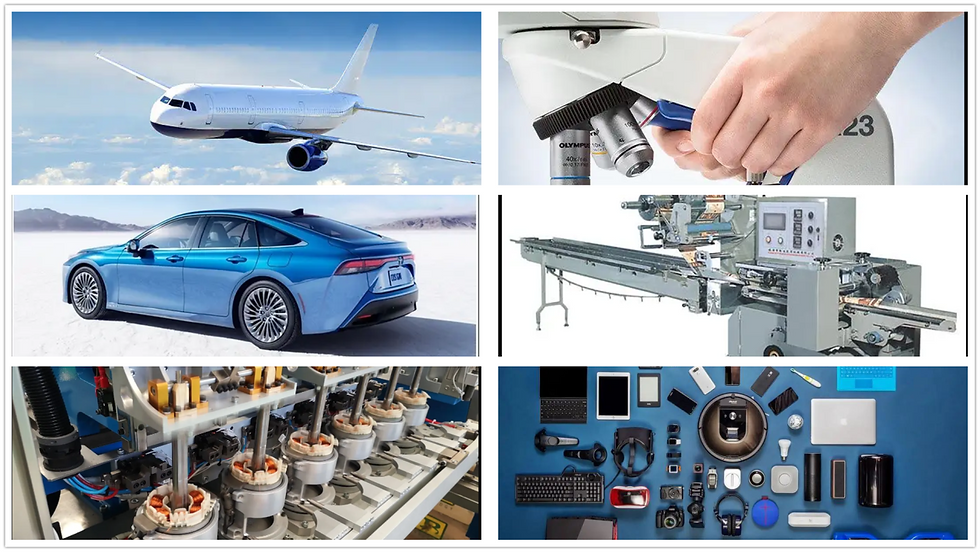Quick-Turn Molding: The Fast-Track Solution for Prototypes and Low-Volume Production
- shiva ganesh
- Jul 24
- 3 min read
Table Of Content
Introduction to Quick-Turn Molding

What is Quick-Turn Molding?
Quick-Turn Molding (also called rapid injection molding) is a specialized form of plastic injection molding designed to deliver fast lead times for low-volume production or prototypes. It prioritizes speed, cost-efficiency, and flexibility over the longevity of molds, using softer materials like aluminum for tooling and streamlined processes to reduce cycle times.
Quick-turn molding is ideal for companies needing functional prototypes, pilot runs, or bridge production between design validation and full-scale manufacturing.
A Brief History of Quick-Turn Molding
Emerging in the early 2000s, companies like Protolabs pioneered the concept to meet growing demand for faster prototyping solutions in industries such as medical devices, automotive, aerospace, and consumer electronics. Today, it remains a go-to service for agile manufacturing needs.
How Quick-Turn Molding Works
The Basic Workflow
Upload CAD files for instant quoting or rapid review.
DFM feedback is provided to optimize the part for molding.
Aluminum tooling is CNC machined quickly (typically within days).
Thermoplastic material is injected into the mold.
Parts are produced, inspected, and shipped within days to weeks.
Key Components of Quick-Turn Molding

Aluminum Molds
Faster to machine, less durable but perfect for low volumes.
Standardized Molding Presses
Machines tailored for rapid tool swaps and shorter cycles.
Optimized Workflow Software
Automates quoting, scheduling, and DFM analysis for speed.
Experienced Technicians
Focus on rapid iteration and fast turnaround.
Types of Quick-Turn Molding
Prototype Molding
Short runs for testing form, fit, and function.
Bridge Tooling
Temporary solution between prototyping and mass production.
Low-Volume Production
Ideal for hundreds to a few thousand parts.
Materials Used in Quick-Turn Molding

Common Thermoplastics
ABS
Polypropylene (PP)
Polycarbonate (PC)
Nylon (PA)
POM (Acetal)
TPU (Rubber-like plastics)
Limitations
Typically excludes exotic or specialty materials used in high-volume molds.
Applications of Quick-Turn Molding

Medical Devices
Enclosures, fixtures, housings for pilot testing.
Automotive
Concept parts, connectors, small batch components.
Consumer Products
Prototypes, limited runs for market testing.
Aerospace
Functional components for evaluation and fitment.
Electronics
Casings, connectors, mechanical components.
Advantages of Quick-Turn Molding
Speed
Parts delivered in as little as 7–21 days.
Cost-Effective for Small Batches
No need for expensive hardened steel tooling.
DFM Feedback
Rapid optimization of designs for manufacturability.
Flexibility
Allows design iterations before committing to full production.
Material Options
Access to a wide range of standard thermoplastics.
Limitations of Quick-Turn Molding
Limited Tool Life
Aluminum tools typically support 1,000–10,000 shots.
Tolerances
Not as tight as hardened steel tools, generally around ±0.1mm.
Surface Finish Options
Limited compared to production-grade tools (SPI A1 mirror finishes rare).
Not Suited for High-Volume
Per-part cost becomes inefficient beyond certain volumes.
Quick-Turn Molding vs. Traditional Injection Molding
Key Differences
Feature | Quick-Turn Molding | Traditional Molding |
Speed | 7–21 days | 8–16 weeks |
Tooling | Aluminum | Hardened Steel |
Volume | 100–10,000 parts | 10,000–1,000,000+ |
Tolerances | ±0.1mm | Tighter achievable |
Finish | Functional | High cosmetic options |
Cost (Tooling) | Lower | Higher |
Cost (Per Part) | Higher (small batch) | Lower (mass production) |
When to Choose Quick-Turn Molding
For prototypes, pilot production, or bridging gaps.
When speed is critical to project timelines.
For market validation and testing before committing to scale.
Future Trends in Quick-Turn Molding
AI-Driven Quoting & DFM
More accurate and faster quoting with design analysis.
Hybrid Molding Solutions
Integrating 3D-printed tooling with CNC molds for even faster turnaround.
Advanced Materials
Expanding options for short-run medical, aerospace, and electrical components.
Cost Considerations
Tooling Cost
Starting from ₹1–5 lakh for simple parts.
Production Cost
Economical up to 10,000 parts.
Higher per-part cost compared to high-volume molds.
Operational Costs
Lower due to simpler tooling and reduced maintenance.
Choosing the Right Quick-Turn Molding Partner
Based on Project Needs
Confirm expertise in rapid prototyping and small runs.
Ensure availability of DFM and engineering feedback.
Certifications
ISO 9001 for general manufacturing; ISO 13485 for medical components.
Value-Added Services
DFM analysis
Mold maintenance
Post-processing (painting, assembly)
Tips for Getting Started with Quick-Turn Molding
Design for Quick-Turn
Follow DFM guidelines for draft angles, wall thickness, and ejection.
Expect Iterations
Use quick-turn for refining designs rapidly.
Plan for Scaling
Consider how your bridge tooling aligns with long-term production.
Conclusion
Quick-Turn Molding bridges the gap between prototyping and mass production. It offers manufacturers a fast, reliable, and affordable way to bring designs to life with real materials and manufacturing processes, ensuring speed-to-market and design confidence.





Comments